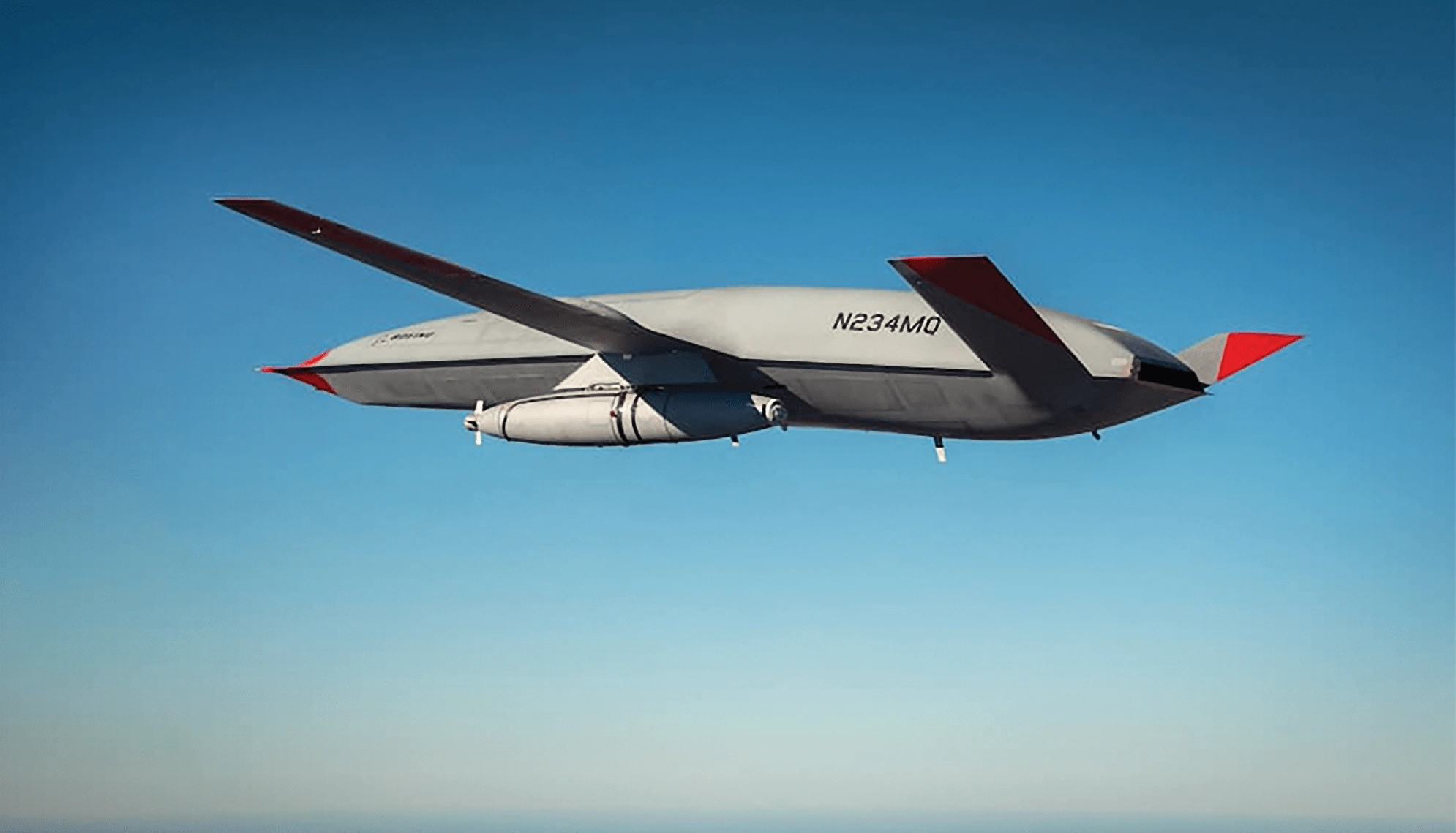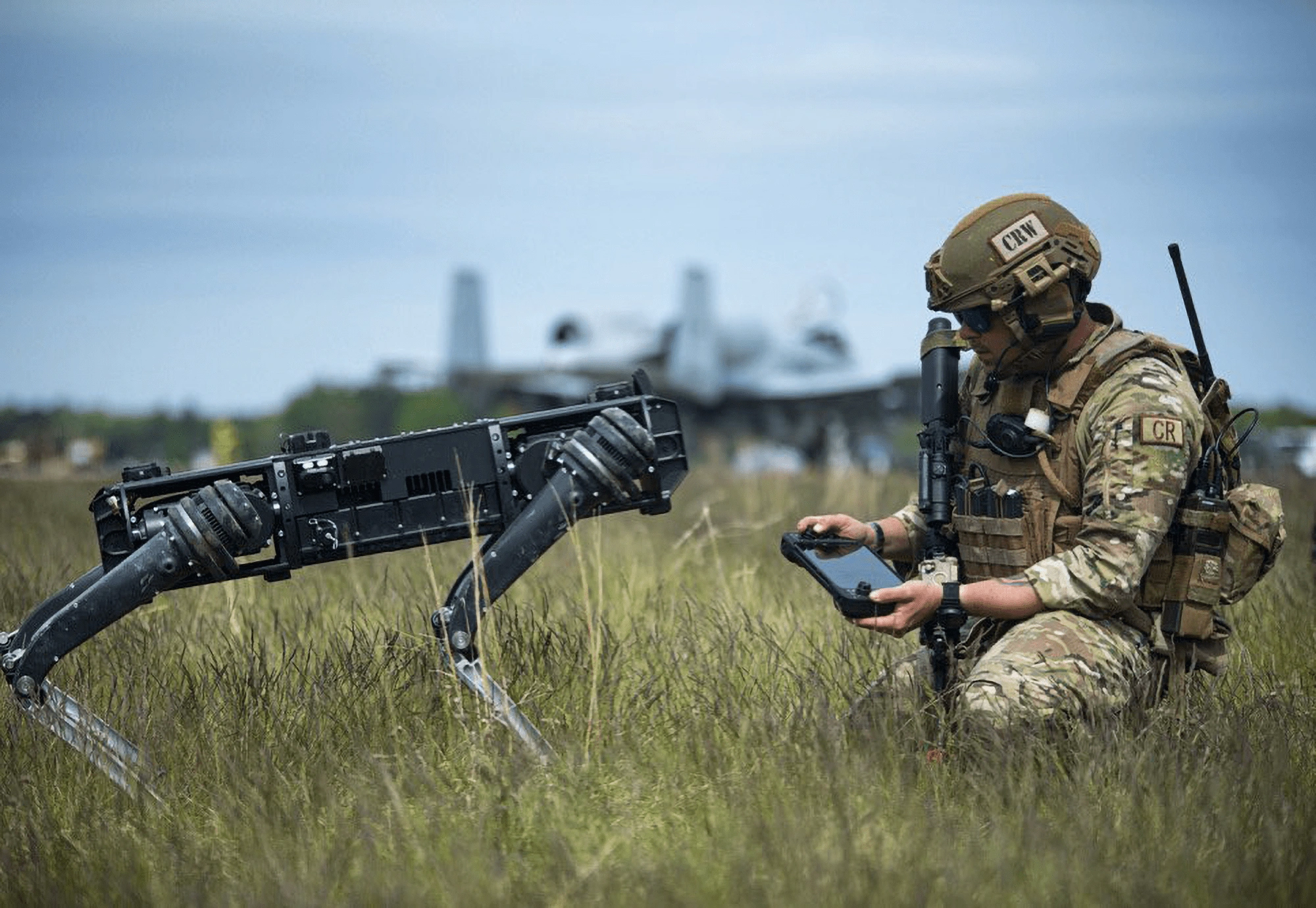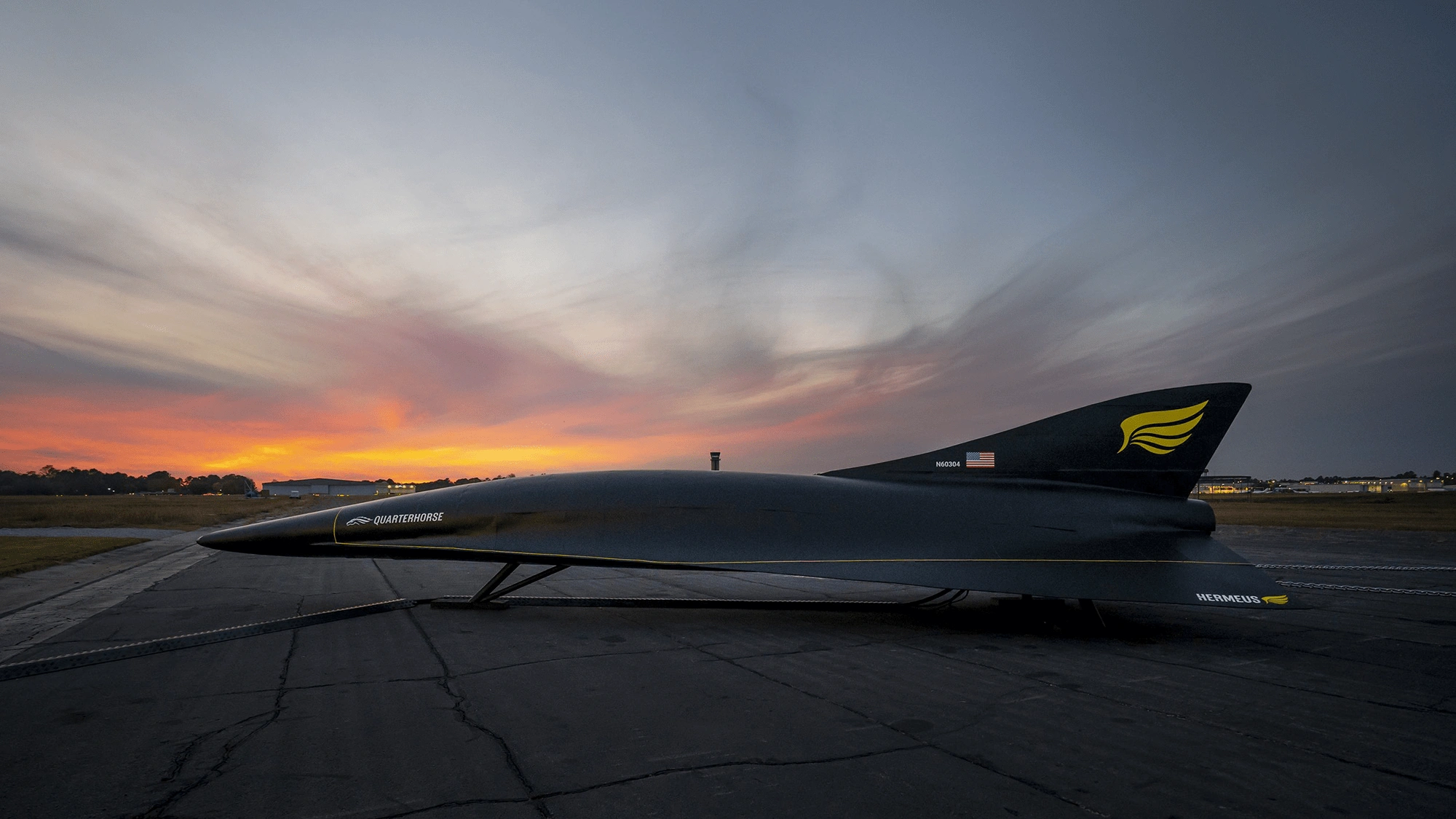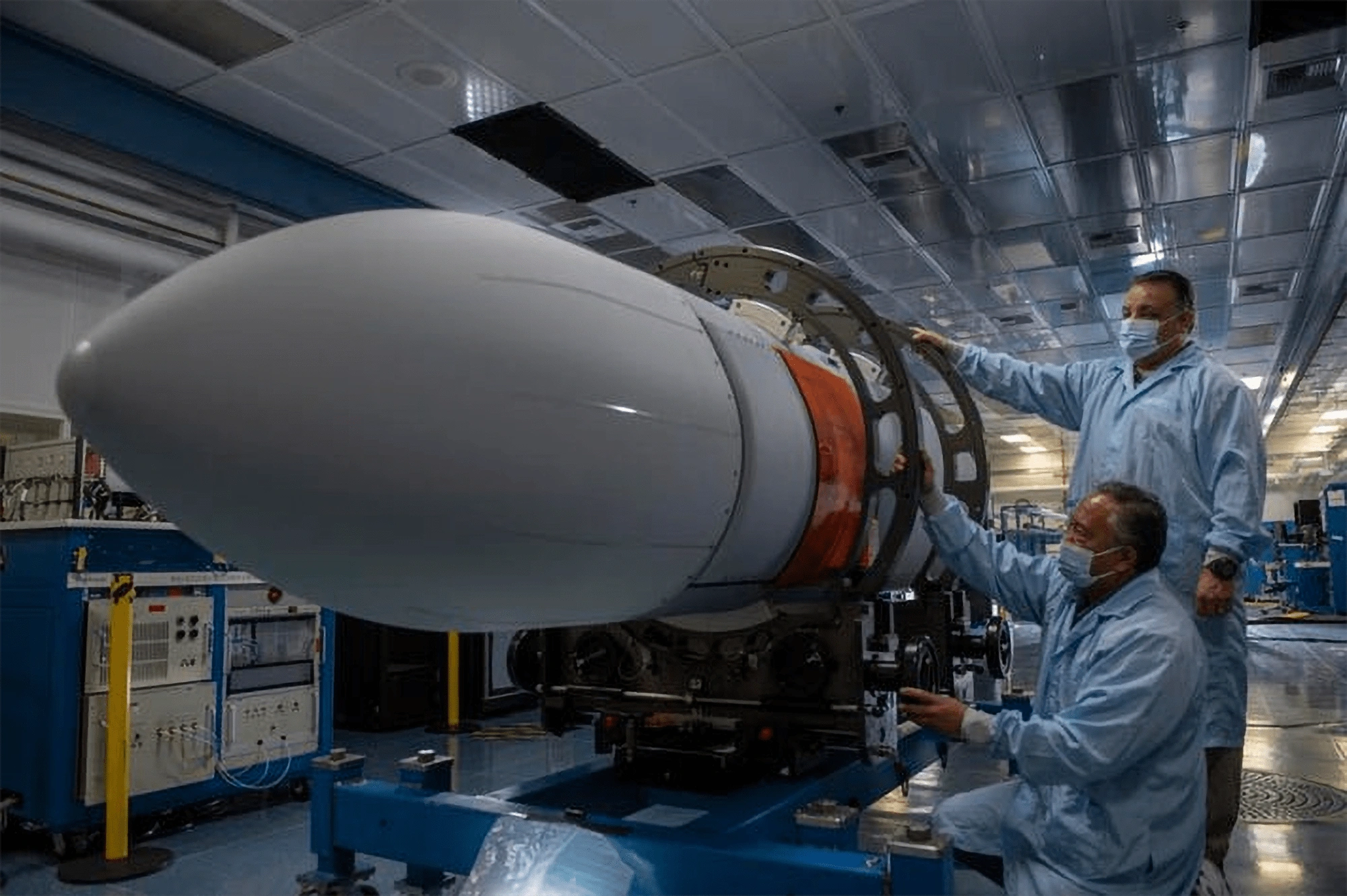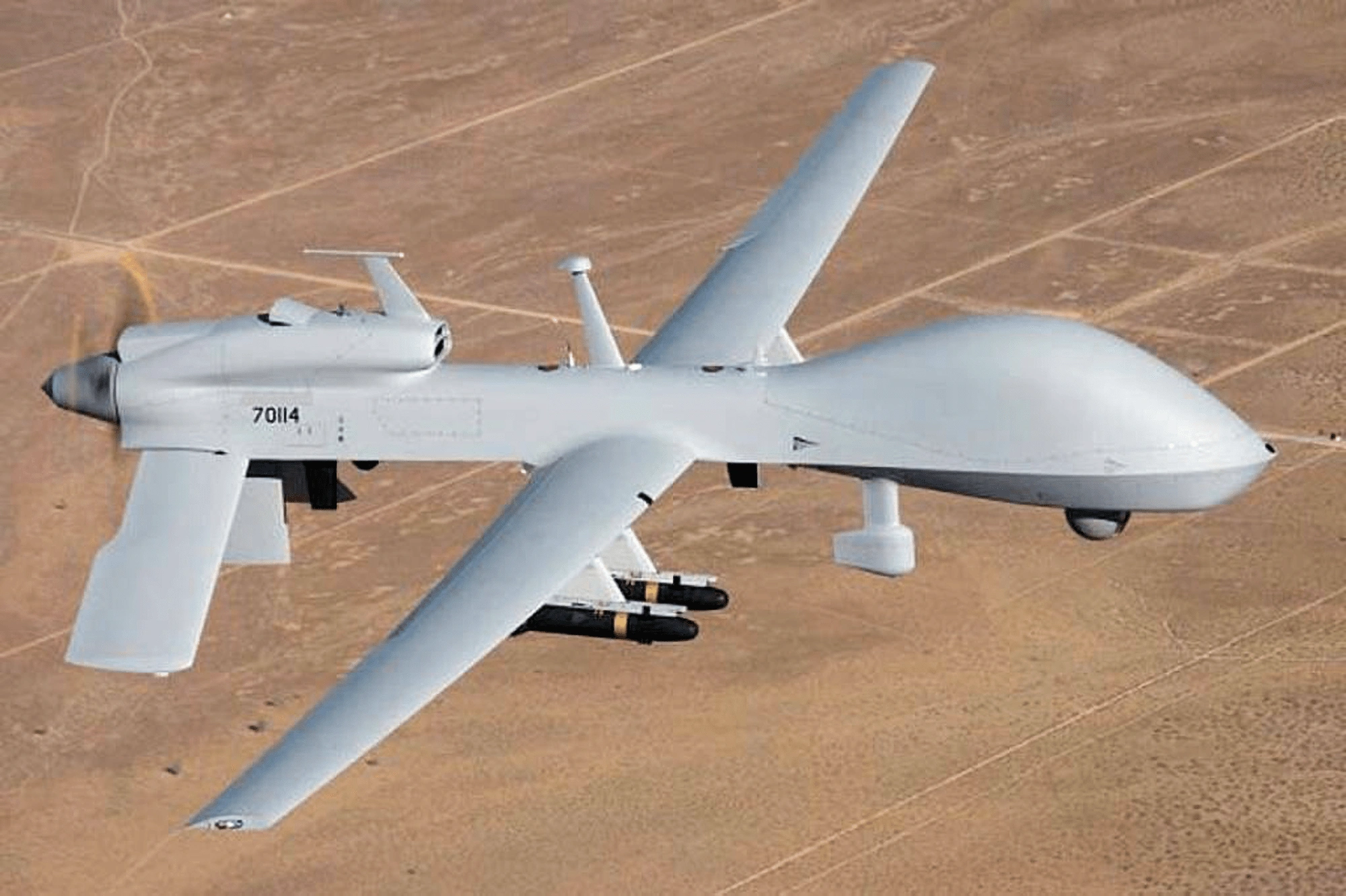
7 Top Military Technology Trends (2024 & 2025)
You may also like:
When the Department of Defense released its fiscal year 2024 budget, it earmarked a record $145 billion for research and development.
Previously, Secretary of Defense Lloyd Austin described the reason for this uptick in the budget: “We understand the need to sharpen our readiness in advanced technology, cyber, space, and artificial intelligence”.
While carefully watching the war in Ukraine and escalating tensions elsewhere in the world, the military is increasingly focused on technology solutions that could potentially give the United States an edge in the conflict.
This report covers technology innovations that are transforming the way militaries around the world are preparing for conflict in the 21st century.
1. Focus on counter-drone technology
The prolonged conflict in Ukraine has made one thing clear: drones play an important role on the battlefield.
In fact, Ukraine recently created a new "drone commander" role to oversee drone operations.
Ukraine now has a dedicated "commander of drone forces".
Drones are growing in importance for a few key reasons:
- Real-time logistics: Drones can provide live video feeds anywhere on the battlefield without the need of satellite imagery.
- Targeting: Unlike artillery, drones can target specific areas, vehicles and soldiers.
- Suppression: Drones can be used to suppress missile and air attacks.
However, the main reason behind the increasing use of drones may be economics.
Drones are exceedingly cheap to produce when compared to most other weapons.
And cheap drones can easily destroy many expensive, high-tech weapons on the battlefield.
Which results in a large economic advantage for the side relying on drones.
For example, drones used by Houthi rebels cost around $2,000 each. However, it costs the US military $2M to shoot one down.
Drones are cheap to produce and deploy. But expensive to take down.
With more drones being produced specifically for warfare, we're seeing new counter-drone technologies spring up.
Militaries around the world are investing in ways to counter drone attacks.
2. Increased spending on robotics
The military’s emphasis on artificial intelligence and robotics is growing.
The market for military robots is expected to reach $24.2 billion by 2025. That’s a CAGR of nearly 11%.
The MQ-25 Stingray drone is an autonomous refueling aircraft.
The US Army has dramatically increased its budget for robotics in six years, going from $17 million in 2015 to $379 million in 2021.
They're even considering a new robot platoon.
Military robots are valuable in combat for a variety of reasons.
The most obvious is that robots can assume risks that could potentially lead to human casualties.
Robots also have capabilities that humans don’t: the ability to stay awake 24/7, the ability to see from all angles, the ability to process information in an instant, and so on.
At Tyndall Air Force Base, robotic dogs are used to patrol the grounds.
Robotic dogs are being used alongside Air Force service members.
These robots can climb stairs, be submerged in water up to nearly five feet, and pick themselves up if they fall over.
They’ve also been deployed at the US/Mexico border and at the Portland Air National Guard Base.
Searches for “robot dogs” have increased in the last 10 years.
Ghost Robotics, the manufacturer of the robotic dogs, showcased an armed version of the autonomous robot at the Association of the United States Army's 2021 annual conference.
This new robotics technology offers numerous opportunities, but there are concerns, too.
The battle over armed autonomous robots is just beginning to take shape.
Many people around the world oppose autonomous weapon systems, including the government of New Zealand and Austria.
Austria is one of 30 countries that support a ban on lethal autonomous weapons.
However, the United States does not support a ban on these robots.
Many countries already utilize man-in-the-loop systems, which are robotic weapons systems operated by a human with remote control.
3. Major advances in hypersonic systems
Hypersonic describes any object moving at a speed that’s five or more times the speed of sound (761 miles per hour).
Search volume for “hypersonic speed” has increased by 25% in 5 years.
Basic hypersonic technology has been around for decades, but advanced hypersonic military systems are now being tested and launched.
The most notable feature of this new technology is that these hypersonic missiles can fly at low altitudes and maneuver in the air, making them nearly impossible to track with current missile defense systems.
Russia, China, and the United States have been racing to build their own hypersonic weapons systems, focusing both on missiles for attacking and systems for defending against foreign attacks.
The first hypersonic missiles to be used in combat were launched into Ukraine by Russia in March 2022.
Search trends for “hypersonic missiles” showed a steep increase in 2022.
The Pentagon dedicated $3.8 billion to hypersonic research in 2022 and is requesting $4.7 billion this year.
The US has several hypersonic weapons in the development phase and launched a successful test missile in March 2022.
In addition, the Missile Defense Agency has a budget of $247.9 million for hypersonic defense.
Private US companies are also racing to develop hypersonic technology.
One start-up, Hermeus, is developing a remotely piloted aircraft that could travel at hypersonic speed.
The Quarterhorse is Hermeus’ first aircraft. Its top speed will be Mach 5.
The United States Air Force awarded Hermeus a $1.5 million contract to assess how their technology could be utilized in a Presidential fleet of airplanes.
The next year, the military invested again, via a $60 million joint contract. This contract has five key objectives, one of which is to “provide wargaming inputs for use in Air Force strategic analysis tools”.
To date, the company has raised $176 million to date.
4. The growing threat of cyber-warfare
In today’s world, cyber security is a matter of national security.
Military personnel classifies cyber warfare in a category called “the gray zone”. This is the space between peaceful, routine operations and conventional (boots on the ground) warfare.
Fighting this cyberwar is not typical warfare. There’s an abundance of ambiguity and deniability, which hinder defense officials from preventing attacks and making quick decisions once an attack has been launched.
However, in recent years, cyberattacks have become more and more war-like, threatening citizens and bringing about major disruptions.
In 2021, a cyberattack focused on a Florida water plant threatened to poison residents by adding dangerous amounts of lye to the drinking water.
Hackers and cyber terrorists, acting in official capacities for other countries or acting on their own, have shown the ability to take down critical infrastructures like electric grids and communications systems.
For example, one expert says cybercriminals would only need to take out nine substations in order to knock out the electric grid for the entire United States.
By 2025, Gartner predicts that cyber attackers will have weaponized operational technology in an effort to harm or kill humans.
Search volume for “military cybersecurity” continues to increase, growing more than 233% in the past 5 years.
The military is deploying a variety of personnel and organizations aimed at defending against cyberattacks and launching attacks of their own.
The Marine Corps recently announced the formation of four new cyber-focused positions: Interactive On-Net Operator, Exploitation Analyst, Host Analyst, and Network Analyst.
Search volume for “cybersecurity jobs” is up 669% in 5 years.
Other branches of the military also have service members devoted to cybersecurity issues.
US Cyber Command was elevated to become a Unified Combatant Command in 2017 and now employs more than 6,000 military personnel.
US Cyber Command was formerly part of the National Security Agency but is now an independent military command.
Overall, the US Cyber command is looking to increase its annual budget to $1.1 billion.
This money would cover the cost of advanced training for personnel, increased operational support, and intelligence capabilities that would bring about access to strategic competitor targets.
5. 3D printing offers opportunities for new materials and manufacturers
Additive manufacturing, also known as 3-D printing, is presenting new opportunities for military applications.
The Department of Defense released its very first strategy for additive manufacturing in January 2021.
The strategy calls for the military to use 3D printing in order to modernize systems, increase readiness, and enhance innovation.
The US Army is utilizing 3D printing to manufacture new forms of munitions.
They anticipate seeing higher velocity, longer range, and increased penetration in munitions made with this technology.
The Army also has plans to use 3D printing to create a military truck exterior in one giant piece.
In the midst of supply chain issues and increasing demands, the US Navy is in short supply of castings, forgings, and fittings for its submarines.
The US Navy is utilizing additive printing to ease supply chain issues.
The Navy has a plan in which suppliers who are having trouble keeping up with demand partner with additive manufacturers who can take overproduction.
6. Directed energy weapons emerge from the testing phase
Directed energy weapons use technology that “produce(s) a beam of concentrated electromagnetic energy or atomic or subatomic particles”.
In simple terms, directed energy weapons convert electrical or chemical energy into concentrated radiated energy. Unlike other weapons, there is no projectile.
Examples are high-energy lasers, high-power microwave devices, and particle beam weapons.
The development of these types of weapons initially gained steam in the early 2000s. While they did achieve the desired goal, they were heavy and cumbersome.
However, in recent years, directed energy weapons have become much smaller and lighter.
The advanced technology means today’s directed energy weapons have a host of benefits that are proving to be extremely valuable to the military.
They are silent and, in most cases, invisible. They can engage multiple targets at once and can fire in a nearly perfectly flat trajectory.
Reports now suggest the directed energy weapon market is valued at $4.3 billion and will reach $10.1 billion by 2026, growing at a CAGR of nearly 19%.
Lockheed Martin recently installed the High Energy Laser and Integrated Optical-dazzler with Surveillance (HELIOS) system on US Navy destroyers. The system made its debut on the USS Preble in late 2022.
The HELIOS system will be mounted on Navy destroyers with the capability to defend against threats in the air and in the water.
HELIOS is a 60-kW directed energy laser, but more powerful 100-kW and 150-kW lasers are available. The Department of Defense anticipates 300-kW lasers to be available in 2022, 500-kW lasers in 2024, and 1-MW lasers by 2030.
The US Space Force is currently developing weapons to be used beyond our planet. Directed energy weapons are one area of focus.
As the US has announced new space-based lasers - search interest in “Space Force weapons” has grown in 5 years.
In a 2021 congressional hearing, an Air Force general confirmed the Space Force is developing these weapons in order to achieve “space dominance,” but would not reveal specific details.
Reports say Space Force has three lasers in development but could be 20 years away from putting these weapons into use.
In addition to using directed energy as a weapon, military operations are exploring the use of laser technology as a defensive strategy.
The Missile Defense Agency was given permission to research and develop laser technology via the 2022 National Defense Authorization Act.
This type of program had been active in the past, but funding cuts derailed progress.
This infrared image shows a test laser from the Missile Defense Agency destroying a short-range ballistic missile.
The Department of Defense requested at least $578 million in 2022 for directed energy research and another $331 million for directed energy weapons procurement.
7. Renewed focus on electronic warfare and communication jammers
The US military uses communication jammers as part of electronic warfare, but many of the programs remain shrouded in secrecy. However, in 2020, we saw some interesting trends begin to emerge which are continuing into 2024.
One main military communication jammer was first deployed in 2004: the Counter Communications System (CCS).
It’s a transportable electronic warfare system that operates via space. It’s able to reversibly block the enemy’s satellite communications.
This Counter Communications System, one of many, is located at Peterson Air Force Base in Colorado Springs, Colorado.
The latest CCS update, Block 10.2, became operational in March 2020, but another update is already in the works.
The US Space Force has partnered with L3Harris Technologies in a $120.7-million contract to update CCS through 2025.
L3Harris officials say these updates will double the capability of the current system, as well as “enhance missions, significantly reduce size and power needs, and increase automation”.
Search volume for “L3Harris Technologies” has grown 9,100% in 5 years.
Official details are sparse, but analysts say the current technology in this system can effectively block communications on C, Ku, and X-band frequencies. It may also be able to block Ka band transmissions.
Other branches of the military are also investing in communication jamming technology.
In January 2022, the US Navy contracted with Raytheon Technologies to build five advanced electronic jammers that will fly aboard the EA-18G Growler EW jets. The deal is worth more than $226 million.
These devices have the capability to disrupt enemy radar, computer systems, and communications.
The jammers, called NGJ-MB pods, will be loaded on the EA-18G Growler.
This upgraded system features high-powered, agile beam-jamming techniques and solid-state electronics.
In the Army, the number of members working in electronic warfare in the next two years is expected to triple, going from 180 to 500 personnel.
The branch is also developing and testing a 300-pound jamming pod to be mounted on an MQ-1C Gray Eagle drone. However, funding for procuring the technology was removed from the budget in 2022.
The US Army continues to test a jamming pod mounted on an MQ-1C Gray Eagle drone.
Conclusion
This wraps up our list of top military technology trends.
Even though many details are classified, it’s clear that the United States military is racing to develop, test, and implement technology innovations as fast as possible.
Technology solutions that enable the military to attack, as well as to defend, will be critical in the months to come. However, it’s up to Congress and the Department of Defense to decide where budgetary resources will have the most impact.
In the future, look for the military segment to take technology trends from the business sector, like AI, robotics, and cybersecurity, in an effort to rapidly develop new solutions.
Stop Guessing, Start Growing 🚀
Use real-time topic data to create content that resonates and brings results.
Exploding Topics is owned by Semrush. Our mission is to provide accurate data and expert insights on emerging trends. Unless otherwise noted, this page’s content was written by either an employee or a paid contractor of Semrush Inc.
Share
Newsletter Signup
By clicking “Subscribe” you agree to Semrush Privacy Policy and consent to Semrush using your contact data for newsletter purposes
Written By


Josh is the Co-Founder and CTO of Exploding Topics. Josh has led Exploding Topics product development from the first line of co... Read more




